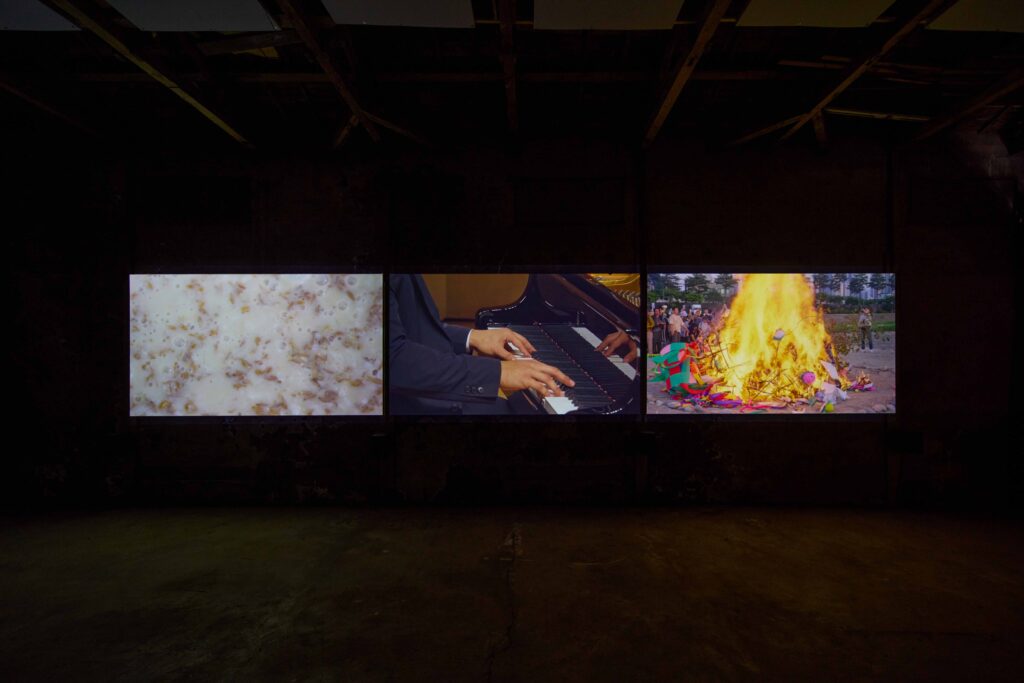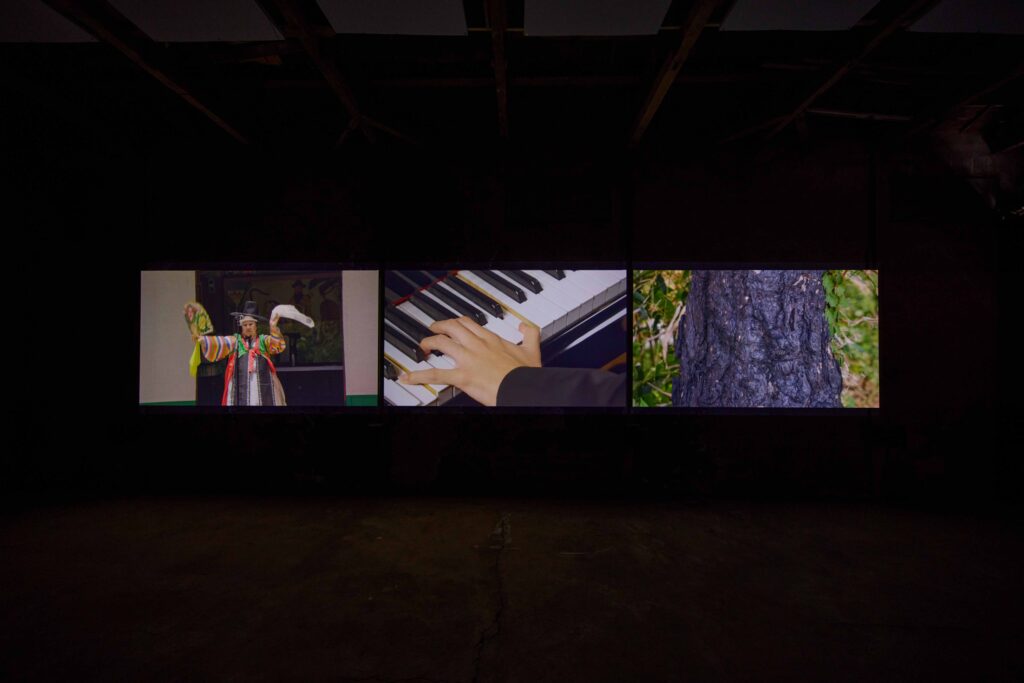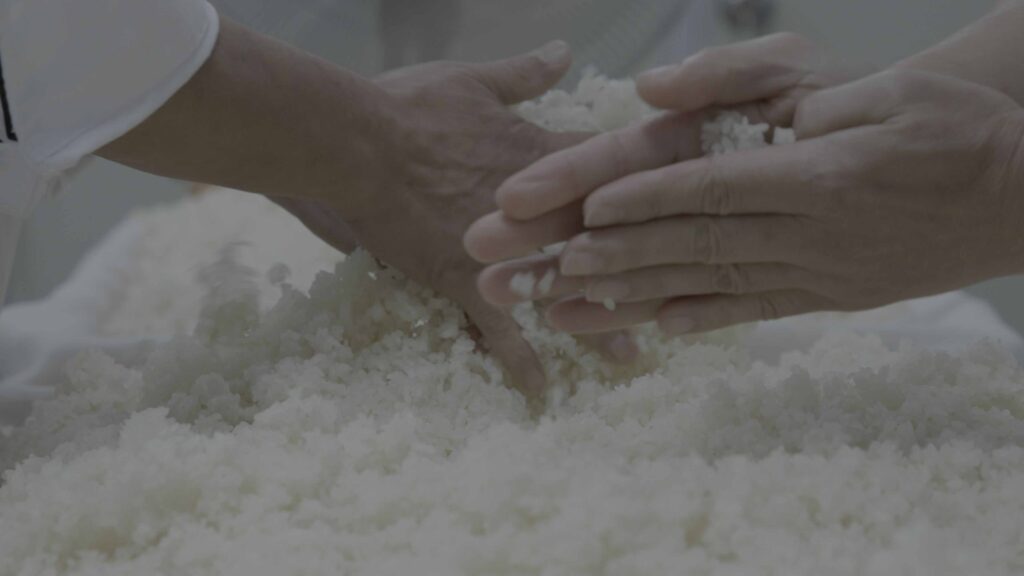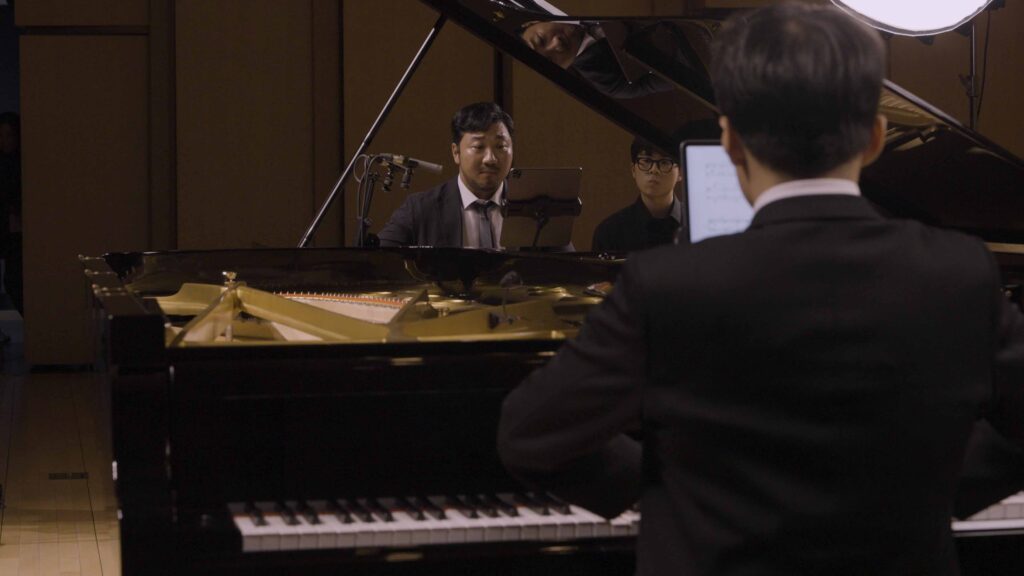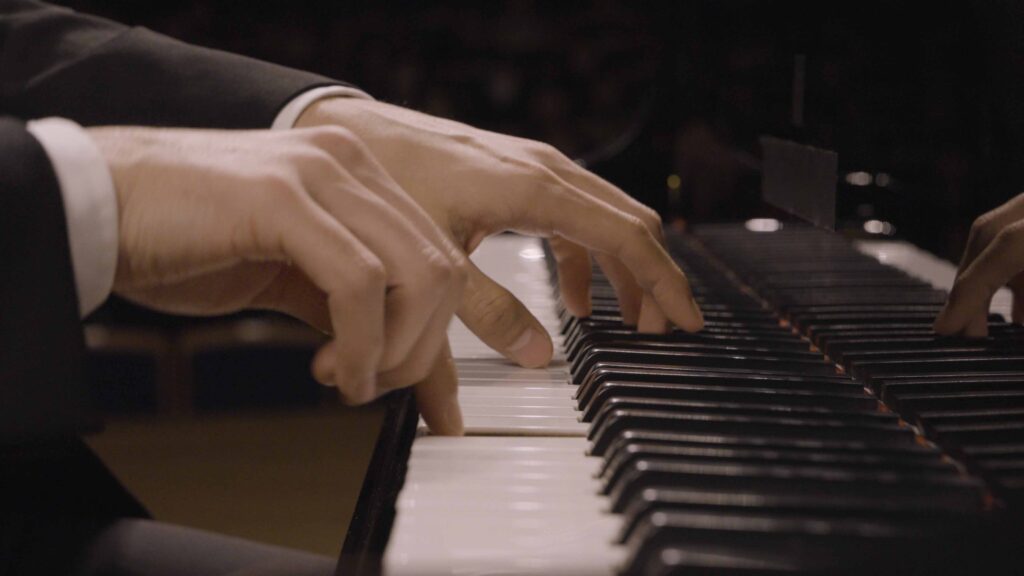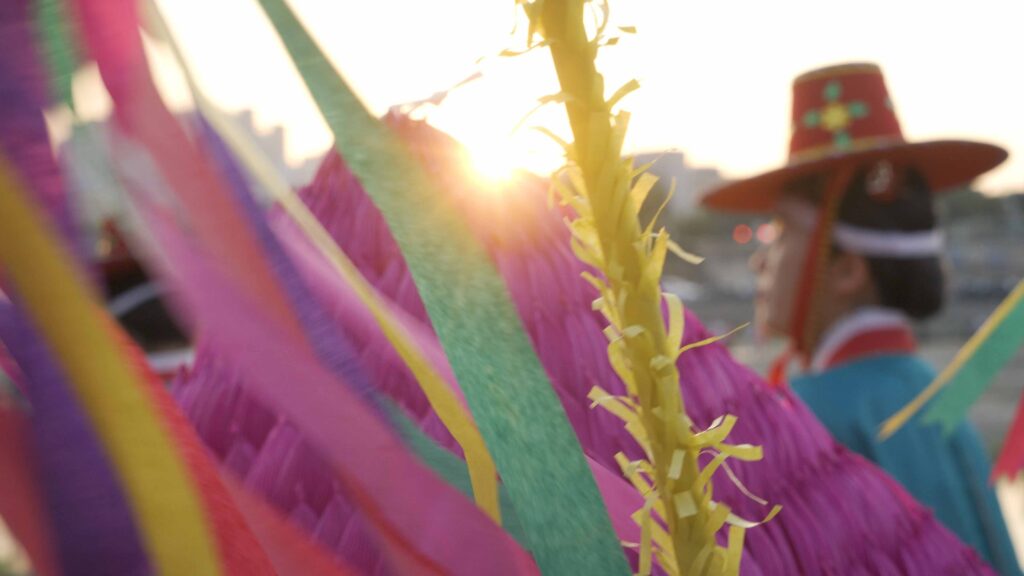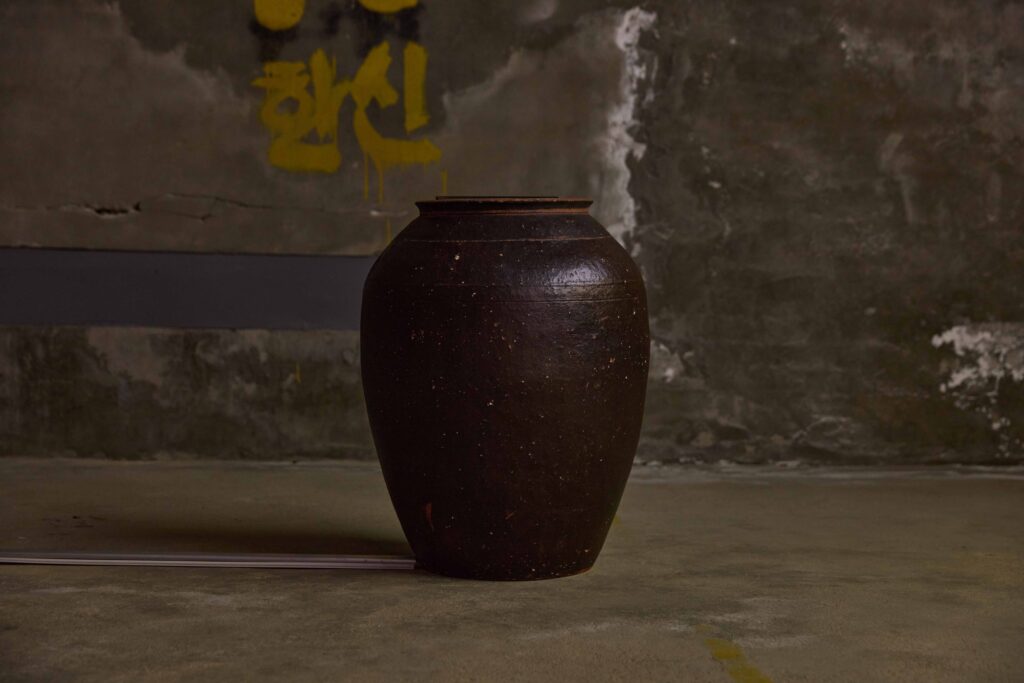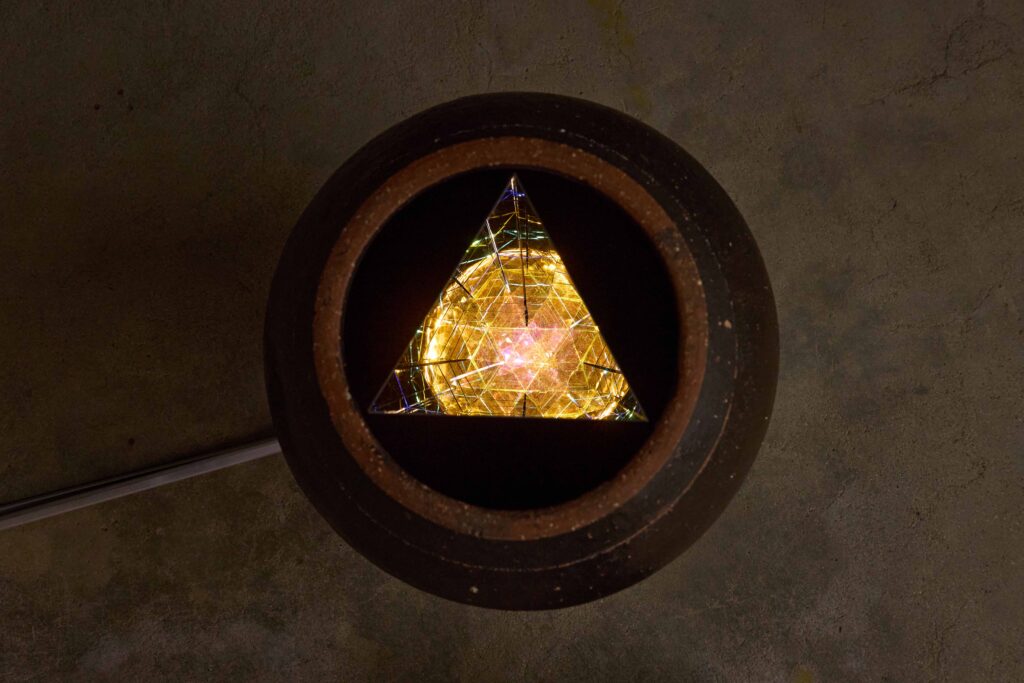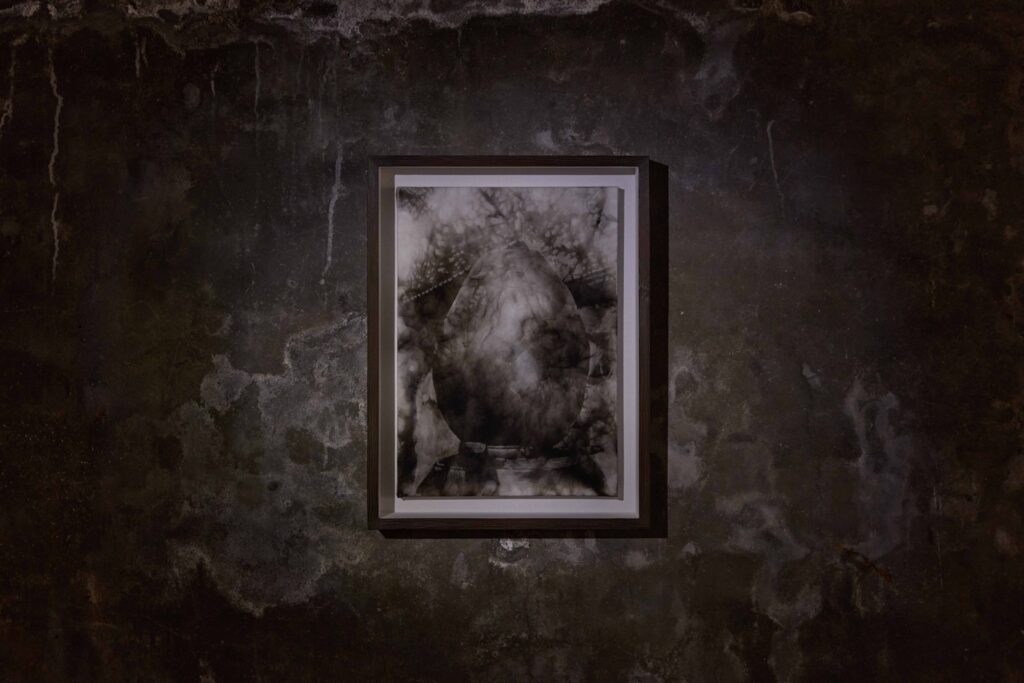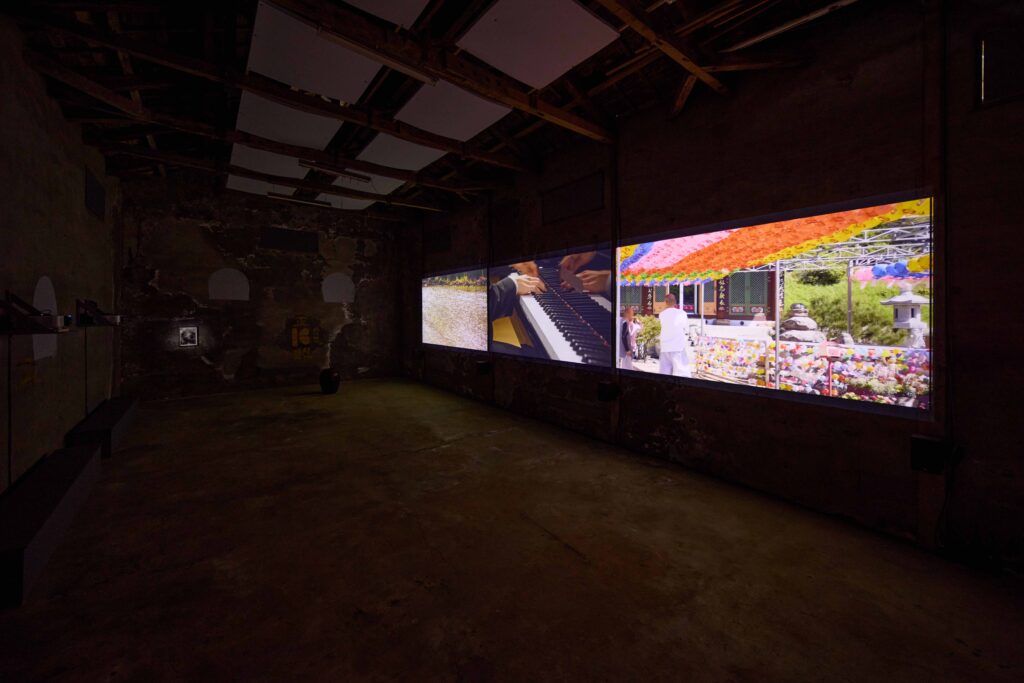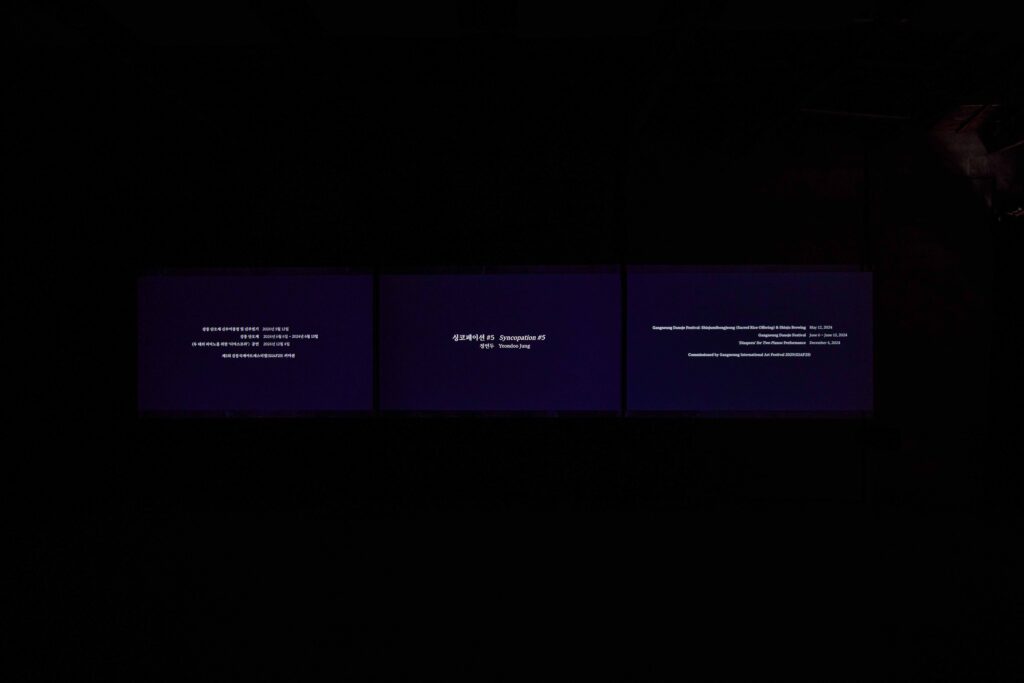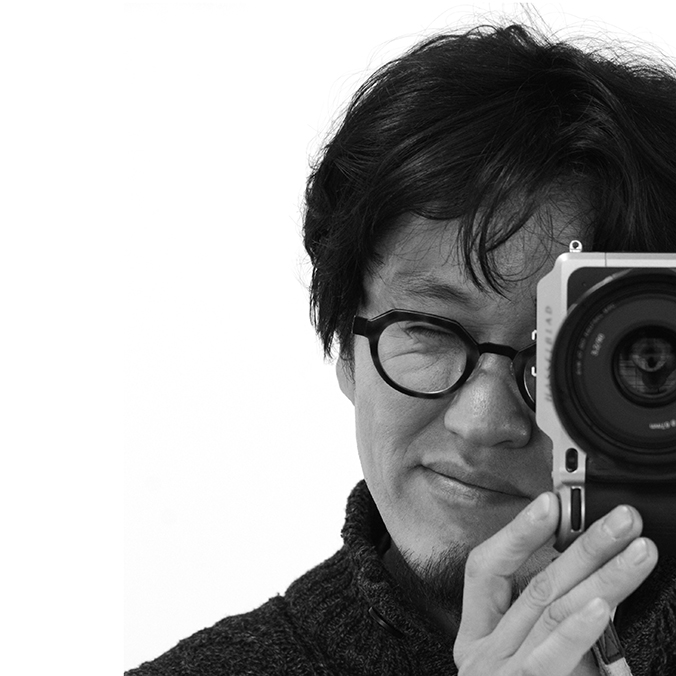EXHIBITION
ARTIST
- Syncopation #5, 2025, three-channel 4K digital video and one-channel pottery light installation, color, sound, mixed media, 17min 21sec, dimensions variable.
- A smoke drawing for Syncopation #5, 2025, soot on watercolor paper, 42 x 30 cm.
Jung Yeondoo’s Syncopation #5 is a three-channel video and single-channel pottery light installation that weaves together multi-layered scenes filmed across Gangneung, a live piano duo performance, and archival ritual imagery from the Gangneung Danoje Festival. The title borrows from the musical term “syncopation,” which refers to offbeat or the disruption of a regular rhythmic pattern— and traces its etymology back to the Greek word for omission or elision. Jung draws on both meanings to explore what slips outside rhythm, what disappears, and what remains unsaid. Time-saturated images are arranged in parallel, forming a visual and emotional structure guided by the logic of syncopation.
One Axis of the work is composer Jiesun Lim’s piece Diaspora, performed live by two pianists. While two pianists play the same song, sitting across from each other, only one piano rings. Despite the shared hand gesture, one emits sound, and the other remains silent as its strings are removed. Such asymmetrical conversation structure symbolically reflects the relationship between those who speak different tongues in a shared time and space. From this silence, the artist reveals muted stories, memories that cannot be voiced, and identities shaped by what remains unspoken.
In this process, Jung draws on the concept of voicing—a piano tuning technique that adjusts tone by softening or reshaping the hammer’s felt. In Syncopation #5, the absence of sound becomes a metaphor for silenced voices. Through the pianist’s hand, the piano’s silence echoes like a heartbeat, then unfolds into light that radiates from the pottery installed in the space. The artist adopts the act of striking into the installation to create moments where the unheard transitions into sound.
The work is grounded in the geographical uniqueness of Gangneung and the seasonal significance of the Danoje Festival, which, from the end of May to the beginning of June each year, becomes the heart of the communal rites and traditional art. Jung Yeondoo captures scenes unique to the city from the festival’s eve, the Dano Gut Ritual, rice patty after the harvest, to the sinjubitgi—the brewing process of sacred liquor. The Danoje Festival, designated as an Important Intangible Cultural Heritage, is a regional rite that embodies the collective aspirations of the community through various events such as shamanic rituals, mask dances, and traditional wrestling. The artist visualizes scenes from this traditional ceremony to construct a temporality of collective yearning— one that transcends the boundaries of a local festivity.
The brewing process is performed with carefully sanitized tools, symbolic gestures to ward off misfortune, and communal effort. It carries a way of responding to the frequent natural disasters and their unpredictable force. The fermentation of the sacred liquor (sinju) thus mirrors a kind of ritualized hope, turning disaster into shared resilience. Jung installed the pottery used to contain sacred liquor and turned the vessel of fermentation into a space that holds stories that could not be heard. The pottery becomes both a site of transformation and a container of accumulated time. The gestures of striking and tapping reappear here as rhythms made visible through light, echoing throughout the space.
A visual thread that runs through the entire work is the hand. From the hands striking piano keys, planting rice, washing grain, adding fermentation starter (nuruk) into a pottery, to the hands of a mudang folded together for prayers—all belong to different times and contexts, yet share a common repeated gesture: acts of creation and care. By emphasizing the recurrence of the hand, Jung visualizes how sound and prayer, life and decay, memory and prayer converge into a single rhythm and movement. In particular, nonverbal gestures such as touching and striking connect the silent piano, the slow fermentation process, and ritual prayers.
The artist places the black-and-white keys of the piano in contrast with the charred remnants of trees after wildfire, and juxtaposes the process of microbial fermentation with the absence of voicing in the altered piano.
The installation also engages with the recurrent wildfires in Gangneung. Jung records saplings growing from scorched ground, wind carving through mountain slopes, and the emergency lights of firetrucks pulsing across the landscape. Like syncopation in music, wildfire disrupts the rhythm of nature—but in its aftermath, the community returns to the land, replanting, brewing, and praying. Jung frames this as a “rhythm of longing,” where recovery itself becomes a ritual.
By placing nature’s unpredictability alongside the community’s ritual response, the work becomes a meditation on how we live with uncertainty. The Gangneung Danoje Festival is not merely a repetition of the past—it is a living ritual, renewed each year in prayer.
The diaspora explored in Syncopation #5 does not stem from geographic displacement alone, but from the inability to speak. The natural disasters faced in Gangneung, and the communal rituals that emerge in response, become a kind of temporal diaspora—moments where meaning is delayed and expression suspended. In this work, the artist redefines diaspora not as exile in space, but as the absence of voice and the deferral of meaning. It is this muteness—what remains unspoken, unheard, or not yet conveyed—that forms his working definition of diaspora. This, in turn, connects directly to the principle of syncopation: the deliberate rupture of rhythmic regularity.
As in much of Jung’s works, Syncopation #5 explores an order of the world that resists clear verbal articulation. The work approaches the theme of “diaspora” not through direct representations of spatial movement or historical migration, but through more indirect dimensions. Sound recedes into silence; fermentation operates on a threshold indistinguishable from decay; and prayer finds its meaning only through repetition without response. Rather than resolving into a singular narrative, the work unfolds through parallel structures and rhythmic dissonance, compelling the viewer to encounter a world that remains incomplete, out of step. It asks not only what has been said, but what could not be said—or what prevented it from ever being spoken. The silent piano, the history no one recounts, the prayers burned to ash, the fermentation of the sacred liquor—all these displaced or disrupted elements do not stand apart. They are intertwined. That, for Jung Yeondoo, is the syncopation at the heart of this work.
Jung Yeondoo (b. 1969) explores memory, history, and narrative through time-based media like video and performance, often incorporating photography in the process. His practice connects individuals across different times and places, constructing layered narratives that traverse the boundaries between documentary and fiction, the individual and the collective. Through poetic, theatrical, and musical languages, he reveals an artistic attitude that sheds new light on reality.
At GIAF25, Jung presented Syncopation #5, a newly commissioned work that juxtaposes traditional rites, natural disasters, and cyclical rituals to reveal histories left unspoken and prayers that remain unanswered. The artist turned his lens toward the landscape of the Gangneung Danoje Festival, capturing the intersection of human prayer and the formidable force of nature. Through the installation of muted pianos, silence and rhythm, fermentation process and shamanic rites, his work weaves a tapestry of ritual acts.
Jung Yeondoo’s major solo exhibitions include MMCA Hyundai Motor Series 2023: Jung Yeondoo – One Hundred Years of Travels (National Museum of Modern and Contemporary Art, Korea), Here and Elsewhere / d’Ici et d’Ailleurs (Space Willing N Dealing, Seoul, 2020), Here and Now (Perigee Gallery, Seoul, 2019), Yudachi – Between Day & Night (Komagome Soko, Tokyo, 2018), and Yeondoo Jung: Behind the Scenes (Norton Museum of Art, West Palm Beach, 2017). Major group exhibitions include the Korean Pavilion at the 60th Venice Art Biennale Every Island is a Mountain (Palazzo Malta, Venice, 2024), The Shape of Time: Korean Art after 1989 (Philadelphia Museum of Art, 2023), and Korean Contemporary Art: Across the Pacific (Korean Cultural Center in Mexico, 2022).
Instagram: @momorashii
